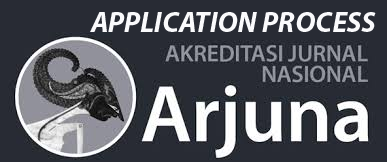Isolasi dan Identifikasi Bakteri E-Coli dari Tumbuhan Coleus Amboinicus
DOI:
https://doi.org/10.59603/niantanasikka.v3i4.940Keywords:
Biochemical Test, Coleus Amboinicus, Escherichia Coli, Identification, IsolationAbstract
Escherichia coli (E. coli) is an indicator bacteria that is often used to assess the level of microbial contamination in food and plants. This study aims to isolate and identify the presence of E. coli from Coleus amboinicus plants which are known to have antibacterial activity. Fresh leaf samples of C. amboinicus were taken from the home yard environment. Isolation was carried out using the serial dilution method and planting on eosin methylene blue (EMB) placement media. Identification was carried out based on colony morphology, Gram staining, and biochemical tests including IMViC (Indole, Methyl Red, Voges-Proskauer, Citrate). The results showed the presence of metallic green colonies on EMB, which showed the characteristics of E. coli. Biochemical tests showed Indole (+), Methyl Red (+), Voges-Proskauer (-), and Citrate (-), which confirmed the isolate as E. coli. The presence of E. coli in C. amboinicus indicates the possibility of environmental fecal contamination, and is a concern in the processing and consumption of this medicinal plant.
References
Aneja, K. R. (2003). Experiments in microbiology, plant pathology and biotechnology (4th ed.). New Age International Publishers.
Cappuccino, J. G., & Welsh, C. (2017). Microbiology: A laboratory manual (11th ed.). Pearson Education.
Cheesbrough, M. (2006). District laboratory practice in tropical countries. Cambridge University Press.
Clinical and Laboratory Standards Institute. (2020). Performance standards for antimicrobial susceptibility testing (30th ed.). CLSI Supplement M100.
Djaafar, T. F., & Yuliani, S. (2018). Pengaruh ekstrak daun Coleus amboinicus terhadap pertumbuhan bakteri Escherichia coli secara in vitro. Jurnal Ilmu dan Teknologi Kesehatan, 5(2), 90–95.
Madigan, M. T., Bender, K. S., Buckley, D. H., Sattley, W. M., & Stahl, D. A. (2018). Brock biology of microorganisms (15th ed.). Pearson.
Nugroho, A., & Mulyani, H. (2020). Identifikasi Escherichia coli pada sayuran segar yang dijual di pasar tradisional. Jurnal Kesehatan Lingkungan, 12(1), 43–49.
Pelczar, M. J., Chan, E. C. S., & Krieg, N. R. (2001). Microbiology: Concepts and applications (2nd ed.). McGraw-Hill.
Purwantini, E., & Supriyanto. (2021). Analisis kontaminasi mikroba pada tanaman herbal di lahan perkotaan. Jurnal Teknologi Lingkungan, 22(2), 98–104.
Sofowora, A. (1993). Medicinal plants and traditional medicine in Africa. Spectrum Books Ltd.
Suriyakala, P., Muthuselvam, M., & Meenatchi, P. (2014). Phytochemical screening and antibacterial activity of Coleus amboinicus. International Journal of Pharmaceutical Sciences and Research, 5(4), 1402–1406.
Todar, K. (2012). Todar’s online textbook of bacteriology. http://www.textbookofbacteriology.net
Winarti, S., & Handayani, D. (2016). Kajian mikrobiologi pada tanaman obat tradisional di lingkungan terbuka. Jurnal Biologi dan Pembelajarannya, 3(1), 15–20.
World Health Organization. (2001). Quality control methods for medicinal plant materials. WHO.
Yusof, N. A. M., & Ahmad, A. (2019). Detection of pathogenic Escherichia coli in fresh herbs. Malaysian Journal of Microbiology, 15(3), 209–215.
Downloads
Published
How to Cite
Issue
Section
License
Copyright (c) 2025 Nian Tana Sikka : Jurnal ilmiah Mahasiswa

This work is licensed under a Creative Commons Attribution-ShareAlike 4.0 International License.






